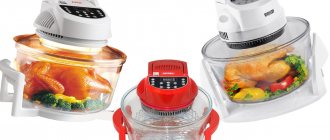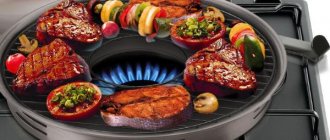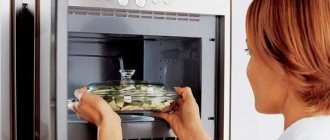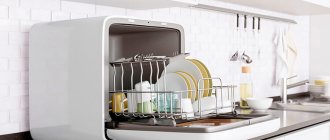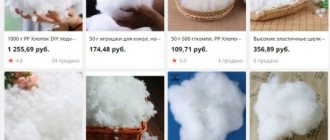It is logical that the combination of glass and high temperature causes concern for many people. Is it possible to heat food in a glass jar in the microwave? Yes, but you need to follow some rules so that the glass does not crack, the microwave does not get damaged, and everyone remains happy and well-fed.
Glass containers are recommended for microwave use as long as they are not thin. In this sense, fireproof glass containers are ideal. But even conventional seaming jars tolerate microwave exposure well.
Plastic dishes
The designations “Thermoplast” and “Duroplast” mean that heating such a container is not dangerous. In addition, plastic can withstand temperatures from -40 to +140°C. Lunch from the refrigerator in such a container can be immediately sent to the microwave.
It is worth noting that plastic is only suitable for heating in microwave mode at a power of up to 800 W.
There are special marks on plastic bowls and boxes suitable for microwave ovens.
The “microwave/not microwave” marking means whether the product can or cannot be placed in a microwave oven.
If you do not find such icons, pay attention to the following symbols.
This symbol means "polypropylene". You can heat up lunch in it using the microwave.
Please pay close attention to this designation. It says it's polystyrene. It is not only suitable for the microwave. Only cold drinks, dishes, and sandwiches can be stored in such containers.
Other items
Can
Illustration: igorr1 / Depositphotos
- Wet sponge for washing dishes. This is a great way to disinfect it D.-K. Park, G. Bitton, R. Melker. Microbial inactivation by microwave radiation in the home environment / Journal of Environmental Health. Wet the sponge well and place it on a plate (or in a bowl with a little water) and heat for one minute. Please note that this will not work with a dry sponge: it will catch fire.
- Soil for indoor plants. This will disinfect it. Brodie, M. J. Khan, D. Gupta. Microwave soil treatment and plant growth / Sustainable Crop Production. Heat for 90 seconds per kilogram.
- Towels in a ziplock bag. This is an easy way to get the equivalent of a heating pad.
- Scotch tape and electrical tape . If they start to lose their stickiness, heat them for 30 seconds.
- Glass jars . They can be sterilized in the microwave for homemade preparations. Wash the jars, pour some water into them and place them in the oven without lids. Sterilize for three to five minutes depending on the volume of the jars.
Disposable packaging
Today, our busyness allows us to buy and heat up quick semi-finished products. Is it possible to cook your favorite cheburek without removing the packaging?
It is possible, but only with microwave film: whether it is such, the manufacturer writes on the packaging.
For example, a baking sleeve. This material can be used in any mode. Tip: make several steam vents. Otherwise, the bag will explode, and instead of a delicious lunch you will have to start cleaning.
Styrofoam containers can be heated with food only if there are corresponding icons on the bottom and lid.
Paper packaging is suitable for cooking and heating dishes with a low content of oil, water, and sugar.
Cardboard glasses and bowls coated with wax for durability are only suitable for heating and only in microwave mode, power up to 800 W.
Rating of the best manufacturing companies
Among the variety of companies producing dishes for microwave ovens, we can highlight the following:
- "Pyrex" - this fireproof glassware made from borosilicate glass is made by Newell, as is "Pyroflam" , made from white glass ceramic. " Vision " - dishes made of shaded glass.
- "Simax" is an inexpensive brand of transparent heat-resistant glass from the Czech Republic.
- "Vitri" - dishes made of heat-resistant plastic for microwaves.
- "Wolomin" is a Polish company of high-quality dishes for microwave ovens.
- Nadir is a Brazilian company distinguished by a variety of shapes and colors of dishes.
- “Tognana” are Italian containers coated with glaze, which increases their strength.
- Luminarc - a variety of styles of super-strong glassware at an affordable price.
Do not confuse dishes and turntables for microwave ovens from Samsung, Lg, Panasonic and other companies. They perform completely different functions.
Ceramics, glass, porcelain
You can cook in ceramic pots in any oven, including a microwave. This is an environmentally friendly heat-resistant material, suitable for baking, simmering, and heating.
Remember: tableware can burst due to temperature changes. Remove the dish from the refrigerator in advance or transfer the food to a suitable container at room temperature.
Make sure that there are no cracks, chips, or abrasions on the glaze on the dishes.
Glass containers have a number of obvious advantages: they are easy to clean; they do not absorb odors. Through the transparent walls it is easy to determine whether the product is ready or not without opening the door.
The heat-resistant type of glass is applicable in the “microwave”, “convection”, “grill” modes.
Thin porcelain is not suitable for the microwave.
However, children's colorful porcelain items are usually made from high-quality raw materials. Many items are shock-resistant and heat-resistant.
Products from official manufacturers must have a manufacturer's mark indicating whether the cookware can or cannot be heated or cooked in a microwave oven.
Eco-ware
For connoisseurs of natural materials, the market offers microwave cookware made from eco-friendly materials. Lunch is safe from plastic toxins when heated in a container made from wheat straw and sugar cane. Such boxes are suitable for heating main courses and drinks. In addition, they are 100% biodegradable.
Reminder: what should not be put in the microwave?
- Crystal. Grandma's shiny crystal contains particles of lead and silver. They will warm up faster than the glass part. The dishes will simply burst.
- Glass, porcelain with print. Quality brands produce colored glassware labeled “microwave safe.” If you are not sure about the quality of the paint on the product, and there are no identification marks on the dishes, do not use them in the microwave.
- Disposable tableware. Do not put a disposable plastic plate in the stove unless you know what it is made of.
- Brilliant decor. Any metal prints can cause cracking and even cause a fire inside the microwave. Plates with metallized rims are not suitable for this type of stove.
- Metal utensils. Metal plates, cups, even enameled ones, cannot be used when using a microwave oven. Such dishes do not allow microwaves to pass through. Moreover, the radiation can be reflected, damaging the furnace emitter.
- Untreated ceramics should also not be used in a microwave oven.
- Foil is also prohibited for microwave use.
Is a cover necessary?
Do not heat or cook food in a microwave oven in a closed container. Due to the temperature, the contents inside may explode. Before using the microwave, be sure to remove the lid from your dish or jar. For the same reason, you cannot heat nuts or eggs in the oven; an explosion of the food inside cannot be avoided. If you need to cook sausages or tomatoes, you must first pierce them with a fork. This will allow the steam inside the food to escape.
Many kitchen appliances sold for microwave use do not include a lid. The exception is plastic containers. Microwave pottery can also be covered with a lid. If a microwave oven is used in the kitchen as the main assistant, you will have to get a lid to get a fragrant and tender dish.
Of course, it is not advisable to use sealed lids; it is better to choose those that are equipped with holes for steam escape. You can use transparent foil that already has holes in it.
Cooking in the microwave: how to choose dishes?
Many ovens have grill and convection modes. Cooking in these modes can only be done in containers made of fireproof (heat-resistant) glass, ceramics, or silicone.
First courses and vegetables should be placed in a glass saucepan. Instead of a lid, it is better to use film with holes for steam to escape.
Silicone molds were invented for baking. They are not afraid of temperatures and do not release toxins when heated. Baking from them is easily laid out on a dish.
The cutlets and omelet will be evenly fried in a container two centimeters above the product level. It is best to cook dishes made from pieces of meat on a tempered glass baking sheet. It will adequately withstand the convection-grill mode, which is optimal for baking.
When selecting dishes for the microwave, rely on the dimensions of the equipment. For a 15 liter oven, the cookware should be up to 1500 ml (1.5 l).
The height of the sides of the container should be a centimeter and a half greater than the height of the contents. For liquid dishes, the plate may be 2 cm higher. A container that is too deep will increase the heating time, which will affect the meter readings.
Recommendations
Let's collect the most important recommendations and tips in one list:
- The best option for the stove is glass products without cracks.
- Look for a special sign on plastic containers. Products must withstand temperatures of 140 degrees.
- Buy pots, containers and cups only in special stores. Low-quality products will cost more if they cause the stove to break.
- If you want to use a grill or convection, choose a plastic container.
- Forget about fat and sugar if you use plastic.
- Don't forget to remove the film from heated food.
- Tip for crispy crust lovers: buy a glass-ceramic plate with a treated bottom.
What causes food to heat up?
Many people know that it is strictly forbidden to place certain types of dishes and products in a microwave oven. This can lead not only to malfunction of the device, but also to very unpleasant consequences, including fire.
Why is this happening? The reason lies in the way microwaves work. At its core, microwave radiation implies an impact on the molecular basis, with a change in the polarity of the molecules. High-frequency microwaves cause charges to quickly change from plus to minus and back again, at such a speed that the particles begin to heat up. This principle works with most elements contained in food: sugar, fats and, of course, any liquid.
How does a microwave oven work?
On the other hand, there are materials that reflect microwave radiation, for example, metal. Being a conductor of energy, iron does not adapt to microwaves, directing them back to the emitter. Accordingly, it begins to warm itself. The mechanism overheats and a fire may occur.
Features of heating in a microwave oven
The microwave heats up by affecting water molecules. The amount of water in food determines the rate at which it heats up. Therefore, heating of products and liquids occurs pointwise and unevenly.
By heating a bun with sausage, ketchup and cucumber, we can get hot ketchup, cucumber, sausage and a lukewarm bun. You need to keep this in mind so as not to get burned while eating.
Due to the same spot heating, be sure to stir microwaved drinks before drinking. This way you will protect yourself and especially children from burns to the mouth and esophagus.
If the dish consists of different ingredients, then it is better to stir the components during the heating process, or at least after. This will ensure more even heating and comfortable eating.

